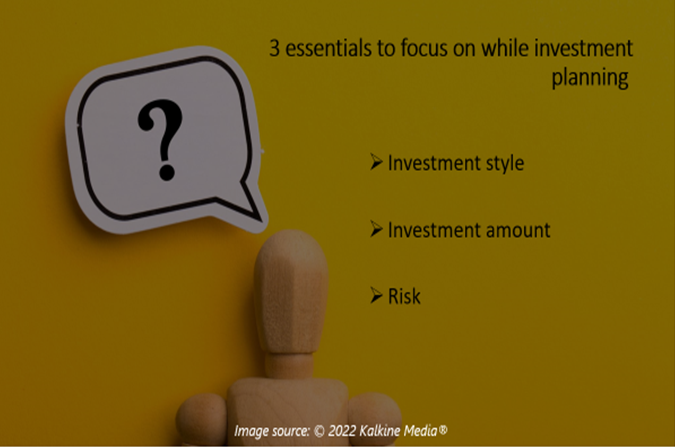Highlights
- People invest their money to be financially secure and build wealth.
- When done responsibly, investment planning can help you attain your financial goals.
- Investors are generally advised to maintain an emergency fund before investing their money.
People invest their money in different asset classes like stocks, exchange-traded funds (ETFs), mutual funds (MFs), bonds etc., to be financially secure and build wealth. Planning your investments and adjusting them according to your financial needs can help you reach there.
When done responsibly, investment planning can even help you attain your financial goals quickly. Though there is no fixed path in the investment world to achieve financial success, there are some essentials that people are often advised to follow to avoid losing their hard-earned money.
So, let’s discuss three essentials that should be considered if you are new at this and still figuring out how to invest responsibly.
What is your investment style?
Investment styles can be broadly categorized into active and passive investing, i.e., whether you want to actively take investment decisions or put your money in a passively-managed account where a professional is in charge of making decisions.
If we dig deeper, investment styles can vary on time spans - short term or long term. It can also be growth or value-based investing depending on the financial requirements of investors.
Investors can also consider a hybrid approach for investing if they find it a suitable strategy while planning investments.
Also read: 8 reasons why you can save your retirement income in TFSA
How much do you aim to invest?
After deciding on an ideal investment style, the next step is to find out how much money one can put away in investments. Determining this will help you assess your comfort zones while evaluating different investment options.
Investors are generally advised to maintain an emergency fund before investing their money. This step ensures that you are not pressured to divest into your investments due to any personal urgencies.
How much risk are you willing to take?
Risk levels differ for different investment options. For instance, bonds are considered less risky as they offer fixed interest rates, while stocks are considered to be riskier as their price fluctuates on a day-to-day basis.
A key detail to note here is that risky ventures like stock investing can sometimes offer higher returns depending on the market scenarios. On the other hand, the interest you receive on bonds is generally lower and fixed (unless regulated).

3 essentials to focus on while investment planning
Also read: How to handle a bearish phase in the market?
Bottomline
Every investment option has a set of pros and cons that investors should note and accordingly plan their investments.
Canadians planning to put their surplus funds to use can focus on these three essential points while planning their investment. Also, it is advised to invest money consistently instead of investing a lump sum amount to avoid financial stress.





